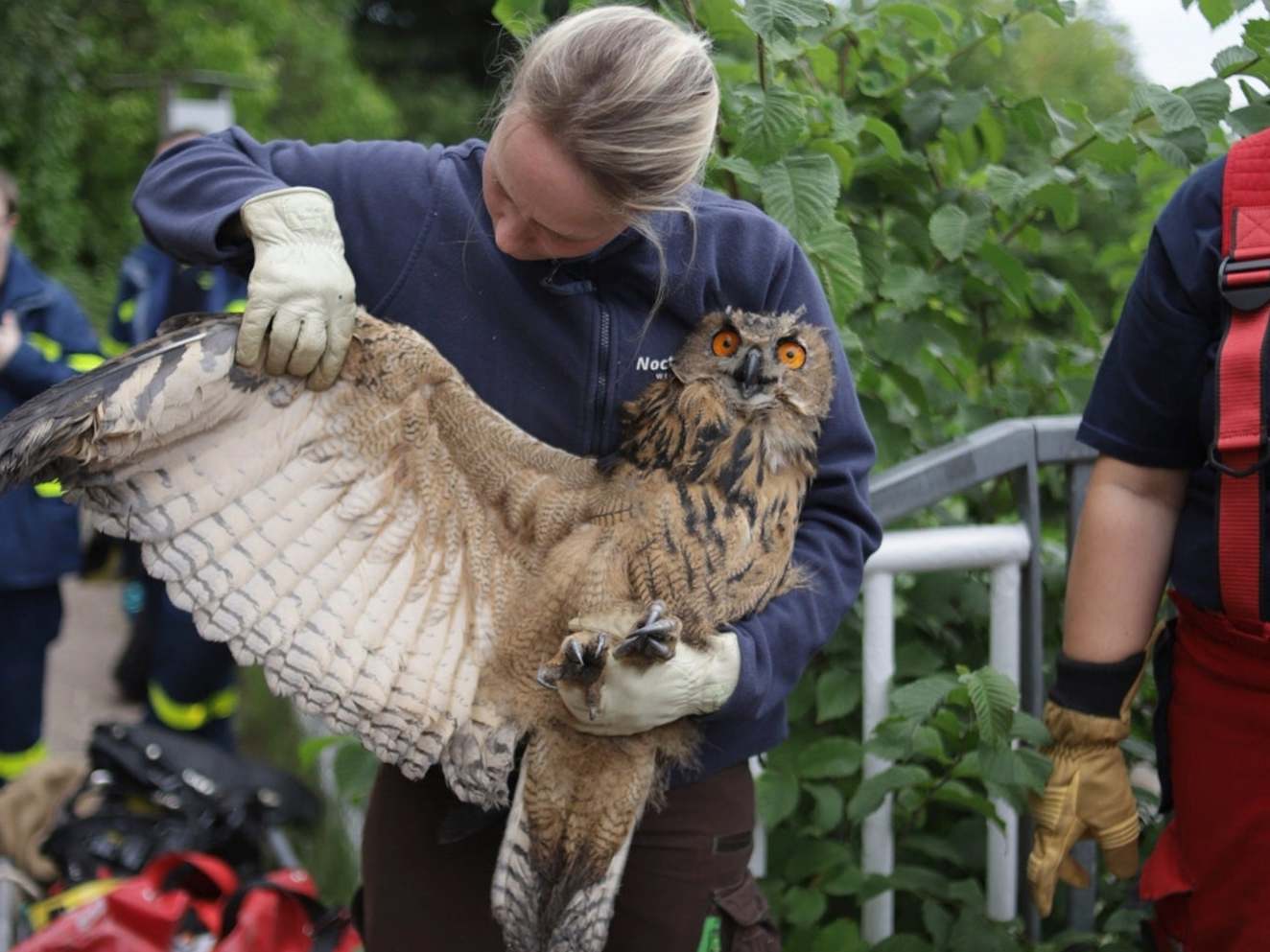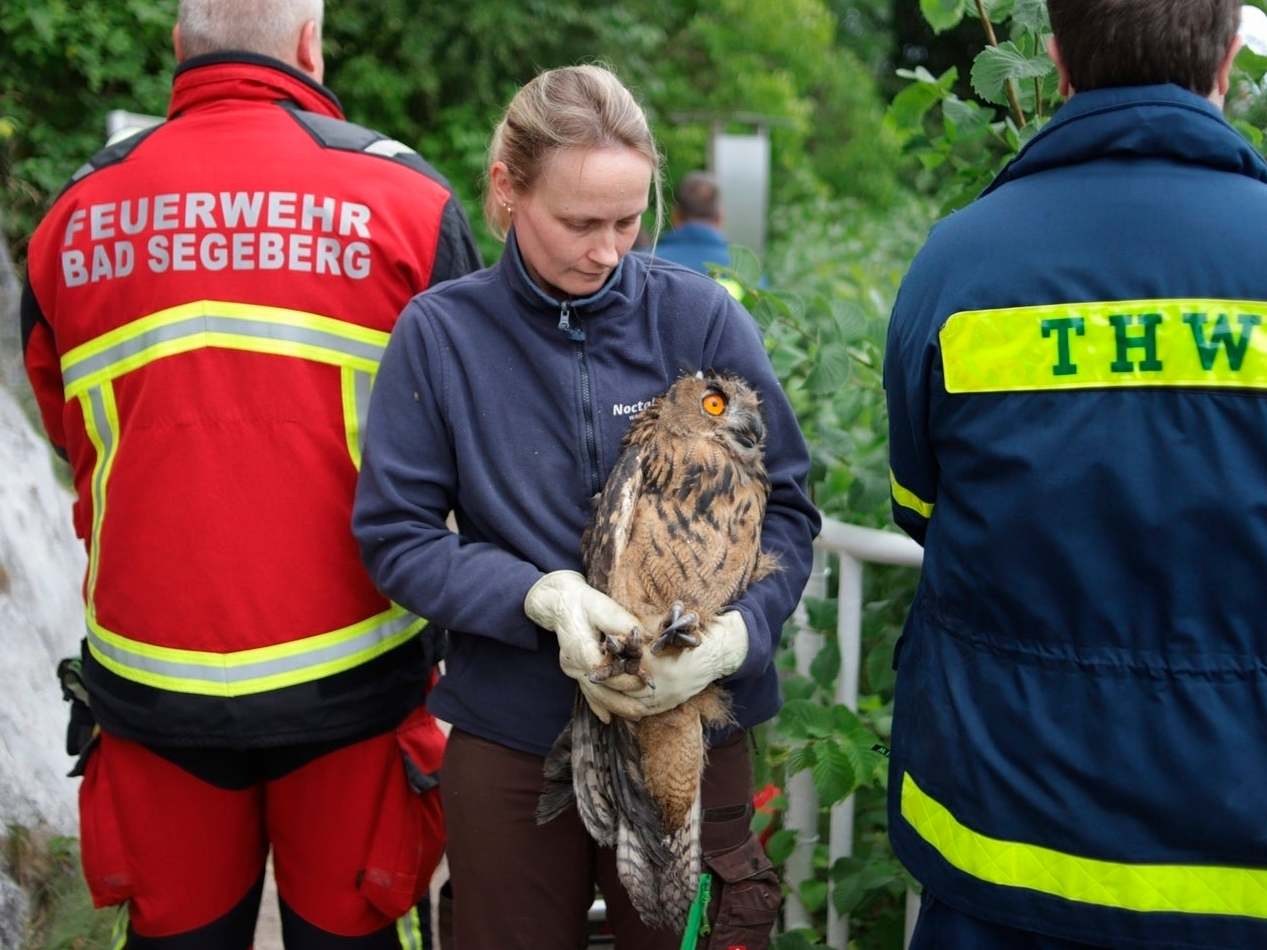Owl’s well that ends well: Huge eagle owl stuck down a 130-foot well rescued by team of 20 people
After failing to lure the animal using food, firefighters descended narrow well to bring it safely back out

An enormous eagle owl trapped down a well in northern Germany has been rescued after a local man heard frantic hooting coming from the deep hole in the town of Bad Sedeberg and alerted the police.
The 40m-deep (131 foot) well is all that remains of an ancient castle in the town, and the narrow shaft was too small for the owl to fly out of.
After initially trying to lure the animal out with food attached to a rope, a rescue team ultimately consisting of 20 people assembled to retrieve the stricken owl.
As well as the narrowness and depth of the well, lack of oxygen was also a problem. The team of 12 firefighters, six voluntary technical personnel and two conservationists from a local bat rescue centre, lowered a probe down the shaft to measure oxygen content and found there was little left to breathe.
Using powerful torches and a telescope to locate the owl, the teams then pumped oxygen down into the right part of the well to keep the owl alive until it could be pulled out.
Meanwhile the rescue teams assembled a structure over the well from which they could suspend a firefighter, who was then lowered into the well wearing breathing apparatus.
Once the firefighter reached the owl, the animal was packed into a bag and the pair were then winched back up.
The huge bird was removed from the bag at the surface and handed over to the bat sanctuary, Noctalis, to be temporarily cared for.

The rescue operation lasted three and a half hours.
On Monday Noctalis said the owl was weakened but was recovering well and they planned to release it this week, AP reported.
A huge network of limestone caves in the area, only discovered in 1913, are home to large numbers of bats and a species of beetle known only to live in this location.
Join our commenting forum
Join thought-provoking conversations, follow other Independent readers and see their replies
Comments